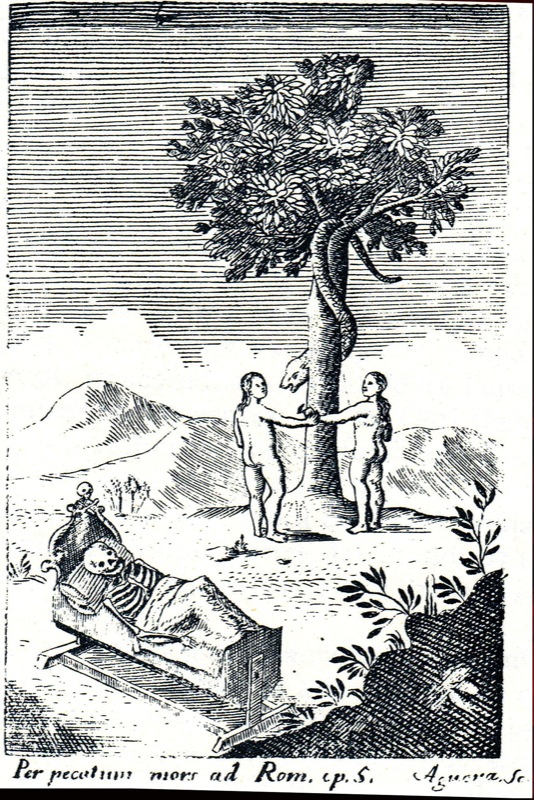
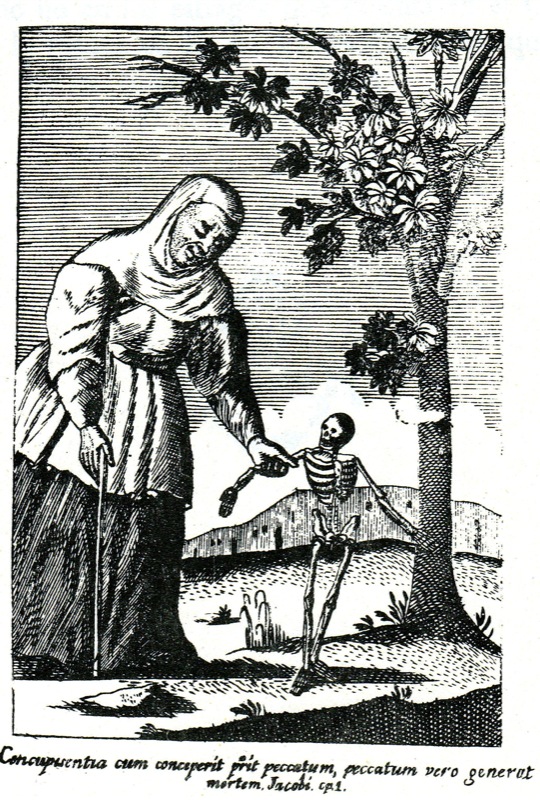

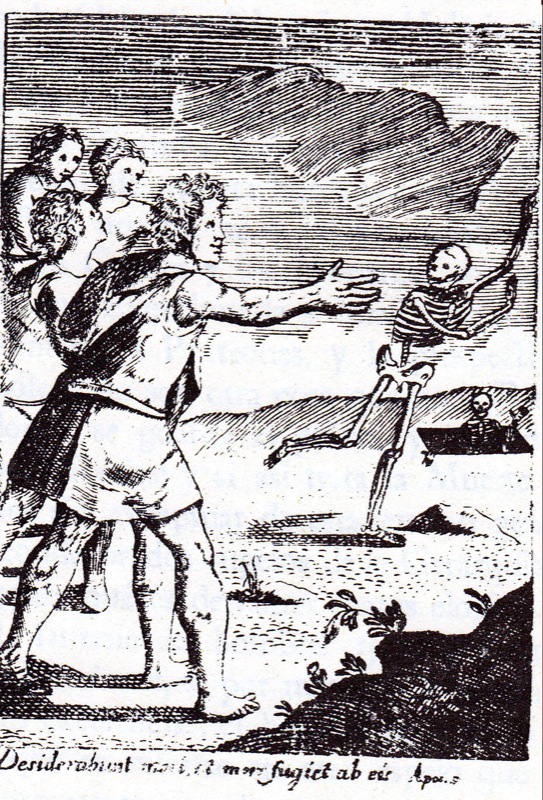
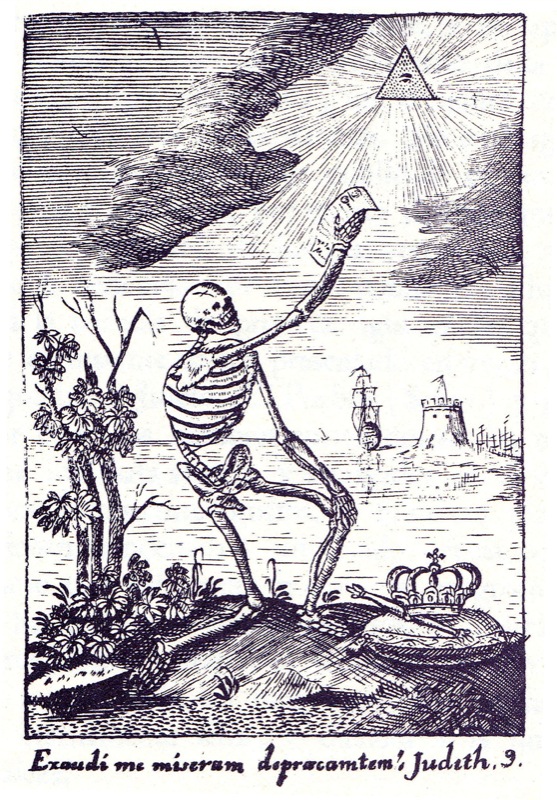
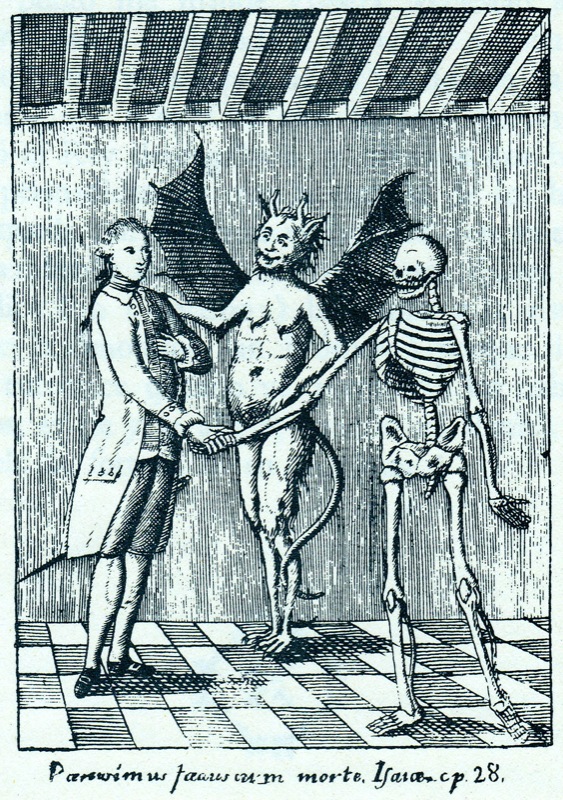
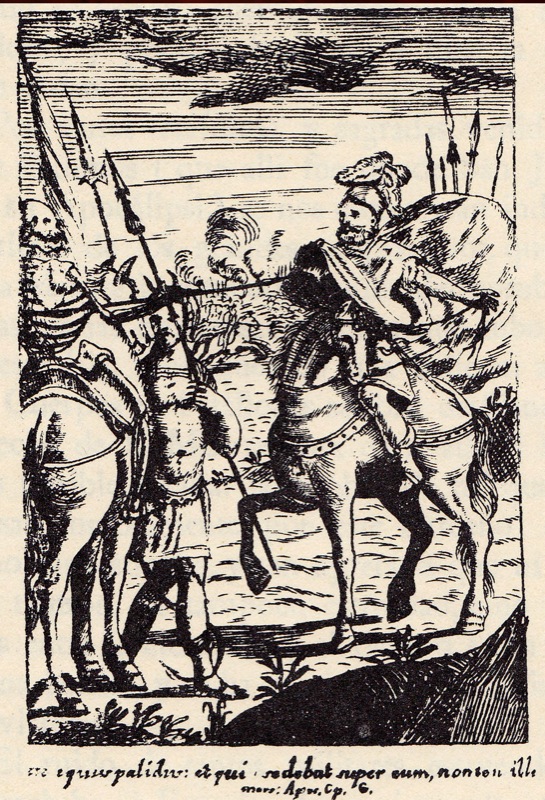
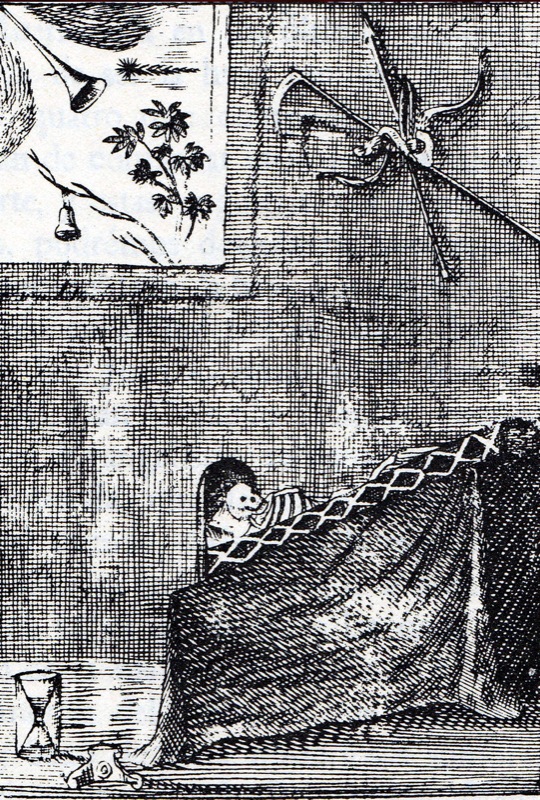
A few weeks ago, Salvador Olguin gave a wonderful presentation at Observatory. The lecture, entitled "'Cuerpo Presente': Mourning and Cultural Representations of Death in Mexico..." covered an incredibly broad swath of Mexican cultural history, focusing on cultural attitudes towards death from the times of the Aztecs to the present. Topics covered included Aztec religion and ritual, José Posada's calavera woodcuts, Spanish missionaries, Day of the Dead, rural Mexican post-mortem photography of the 1940s and '50s, and the contemporary Mexican cult of the dead, now an official state-sanctioned religion. This lecture will, someday soon (I promise!) be available in streaming video form on the Observatory website; stay tuned for more on that.
One of the most interesting things Olguin touched on in his lecture was a book I had never heard of: the fantastically illustrated (see above) La Portentosa Vida de la Muerte (The Astounding Life of Death). This book--a kind of whimsical and irreverent life history of Death in the form of a woman--was published in Mexico in the 18th Century and was, as he explains, highly influential in Mexican culture. I asked Salvador if he would be willing to write a guest post about this fascinating book for Morbid Anatomy; following is his contribution:
The Astounding Life of DeathThanks so much to Salvador for his wonderful lecture, this excellent post, and for introducing us to such a fascinating moment in Mexican cultural history. If you would like to find out more about Salvador's lecture, you can click here; you can also visit Salvador's blog--"Una Liebre"--by clicking here, and can email him with directly with any questions at salvador.olguin@gmail.com. To find out more about Observatory, click here; if you'd like to get on the Observatory mailing list, please click here.
La Portentosa Vida de la Muerte (The Astounding Life of Death) is an 18th Century Mexican book written by Joaquin Bolaños. In it, Bolaños recounts the many adventures of Death, from her beginnings in the Garden of Eden, where she is said to have been born from Adam’s Sin (Death’s father) and Eve’s Guilt (her mother; see image 1 above), to her dramatic destruction in Judgment Day (image 8), with copious quotations from the Bible and the Church Fathers to back up his facts. The protagonist of the story is referred to as “The Empress of the Sepulchers, The Avenger, and The Very Lady of All Humanity”. Muerte (death) is a female noun in Spanish; this fact allows Bolaños to create a female heroine, a very peculiar one.
Bolaños develops his central character thoroughly, in a lively and humoristic way, reflecting–and contributing to shape–the ambiguous relationship that Mexican culture has with death, marked by eroticism, morbid attraction, sadness and joy. Bolaños’s Death is irreverent, passionate and adventurous, and the book is a very early example of an American character-based novel, with a tongue-in-cheek tone and not lacking social criticism. It was criticized by Mexico’s Colonial literary critics as a piece of bad taste; nevertheless, it has been reevaluated by later scholars as a remarkable testimony of its time.
In the book –which is considered by many scholars to be one of the first Mexican novels–Death suffers, she falls in love, gets married several times (though her marriages were never consummated, as her husbands--all doctors--died upon entering the nuptial bed), and becomes angry when men forget about her continuous presence. The 1792 edition was accompanied by a series of illustrations (shown above) that depict Death in her early days, walking beside her grandmother (image 2)–whose name, according to Bolaños’s quotes from the Bible, is Concupiscence–, getting married (image 6)–while the Devil serves as the minister.
I gladly share some of these illustrations with the readers of this blog.
All images from the 1792 edition of La Portentosa Vida de la Muerte, care of Salvador Olguin; I urge you to click on thme to see larger, more detailed versions. Well worth the time!


2 comments:
sounds like a fairy tale in a way
Brilliant and beautiful!!! I would love to read the original text as well but the ilustrations are just terrific and the introduction by Salvador is fantastic. I think that this is the firts time I see the death running away from the living and I love it ;)
Thank you.
Post a Comment